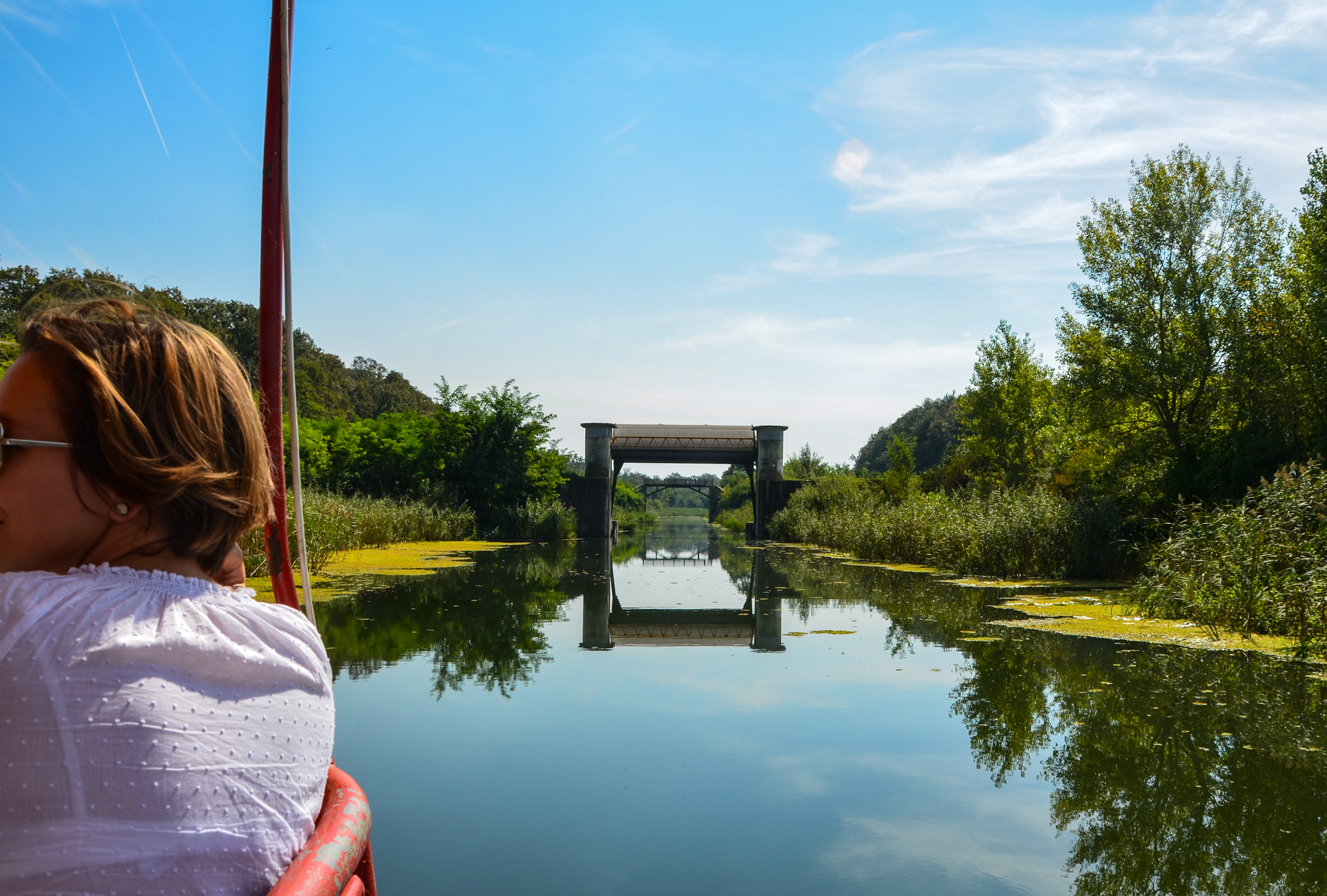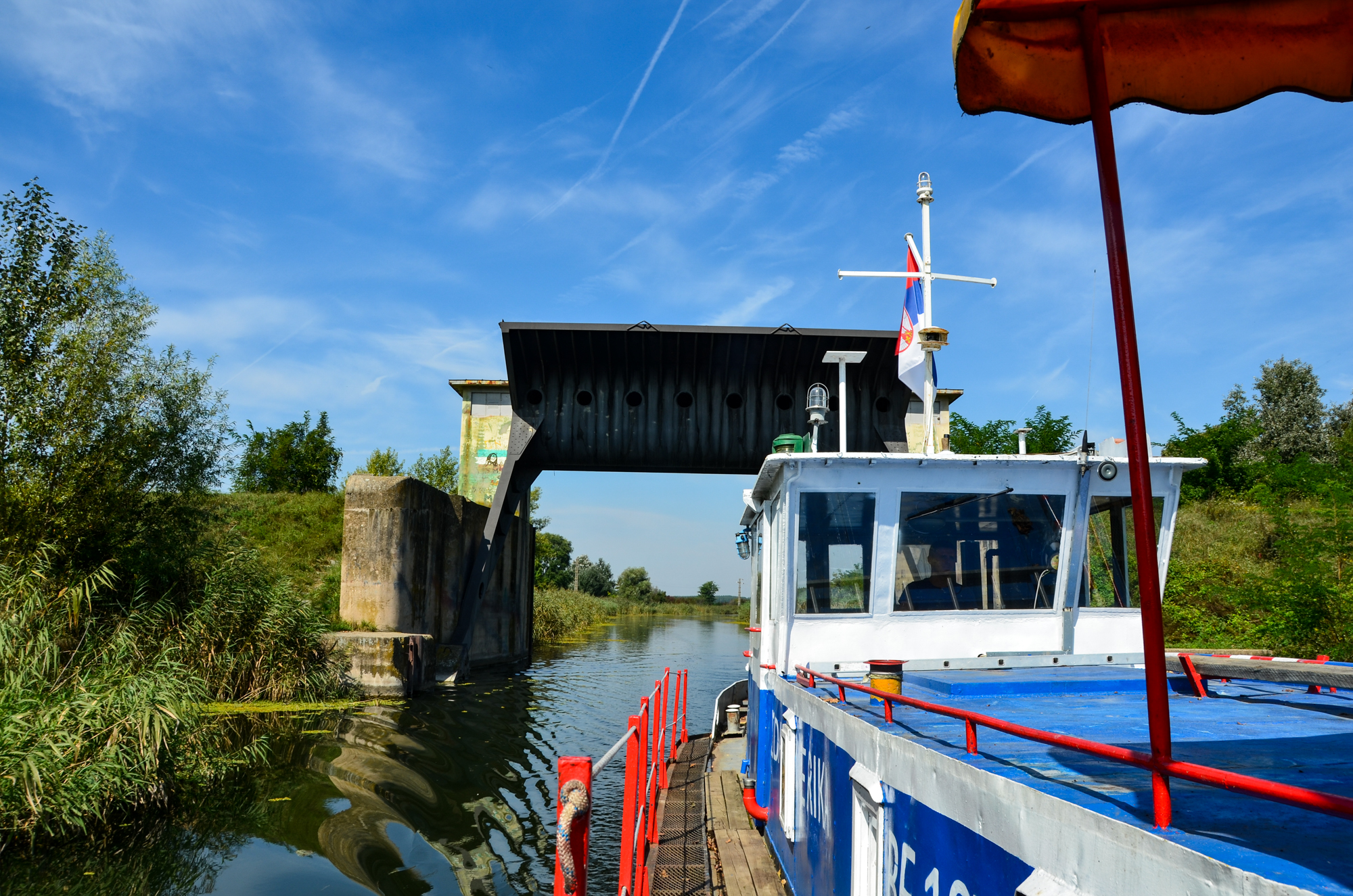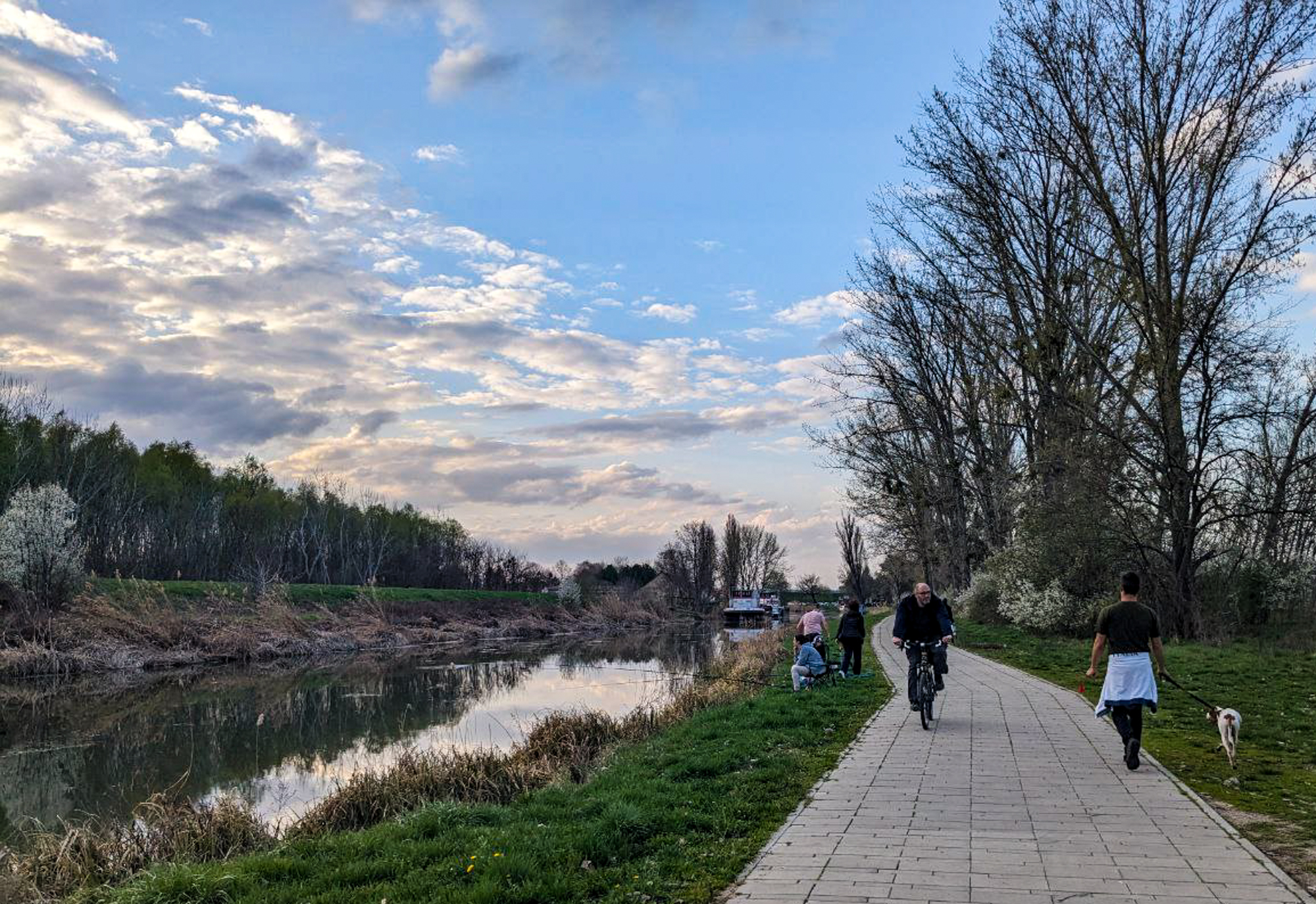
КАНАЛ КАО „ПЛАВО-ЗЕЛЕНА СТАЗА“ ГРАДА СОМБОРА
„Градови хидро-баштине“ (Hydrо Heritage Cities) је пројекат европског URBACT програма, у коме учествује и град Сомбор. У пројекту се Сомбор и остала четири европска града-партнера упознаје са искуствима грчког Халандрија на ревитализацији римског аквадукта и његовом укључењу у савремени живот, а затим сличне активности спроводи на локалним примерима хидро-баштине. Сомбор се определио за Велики бачки канал, који је у великој мери утицао на идентитет града. Дошло је време да се каналу приступи на нов начин.
Средином 18. века су се појавиле и прве идеје о прокопавању канала, којим би се повезали Дунав и Тиса. Ипак, до пројекта и изградње је дошло тек на прелазу из 18. у 19. век, по нацртима Јожефа и Габријела Киша. То је у то време био највећи градитељски подухват у Европи, на коме је стално радило 2000-4000 радника. Колико је то био тежак подухват сведоче и песме из тог времена, где Сомборци углавном имају негативно виђење канала.




 Фотографија Драгана Сиљановић Козодеровић
Фотографија Драгана Сиљановић КозодеровићДрагана Сиљановић Козодеровић дипл.инж.арх.
Координатор пројекта
*у тексту су коришћени историјски подаци из чланка Велики Бачки канал на сајту
www.ravnoplov.rs Милана Степановића

THE CANAL AS A “BLUE-GREEN TRAIL” OF THE CITY OF SOMBOR
“Hydro Heritage Cities” is a project of the European URBACT program, in which the city of Sombor also participates. In the project, Sombor and four other European partner cities are introduced to the experiences of the Chalandri(Greek) in revitalizing the Roman aqueduct and its inclusion in modern life, and then similar activities are carried out on local examples of hydro-heritage. Sombor opted for the Great Bačka Canal, which has greatly influenced the identity of the city. The time has come to approach the canal in a new way. In the mid-18th century, the first ideas about digging a canal to connect the Danube and the Tisza appeared.
However, the project and construction only took place at the turn of the 18th and 19th centuries, according to the designs of József and Gabriel Kiš.
At that time, it was the largest construction project in Europe, with 2,000-4,000 workers constantly working on it. How difficult it was is also evidenced by the songs from that time, where the people of Sombor generally have a negative view of the canal.

Map of the Franz (Great Bačka Canal) according to the design of Jožef and Gabriel Kiš at the end of the 18th century (source www.ravnoplov.rs; Milan Stepanović)
When it was opened in 1802, the canal led to the rapid development of Sombor due to the trade that took place through it. It should be noted that at that time there was no railway, and the roads were summer roads. Grain, lumber, wine, tobacco, and food supplies were transported on it on more than a thousand ships per year, a total of about 70-80 thousand tons of goods. There were ideas and projects to dig another canal through the city center, but the work had never began.
As the Danube changed its course, in the mid-19th century, a branch from the Danube to Bački Monoštor was dug and the first concrete lock in Europe was built according to the design of the imperial engineer Johann Mihalik. It was also the first example of underwater concreting in the world!

The importance of the canal declined somewhat with the construction of the railway in 1869, but it was still the cheapest way to transport large quantities of goods. In 1870, the canal was given under concession for a period of 75 years to the London joint-stock company „Wythes & Longridge“. The canal was renovated under the leadership of Ištvan Tir, who was also the builder of the Corinth Canal in Greece and a close friend and collaborator of the builder of the Suez Canal, Ferdinand Lesseps. In the next five years, extensive work was carried out (the channel was deepened), and a new water supply channel was built. This undertaking represented the largest investment of English capital in the Kingdom of Yugoslavia, and the concession expired in 1945.
Between the two world wars, industrial plants sprang up along the canal itself: sugar mills in Sivac, Crvenka and Vrbas, a cloth factory in Kula, many hemp factories and mills. Water from the canal was used to irrigate large areas of arable land, and also to drain water from surrounding estates. The Great Bačka Canal was nationalized in 1945, and after the great flood of the Danube in 1956, it was deepened in the section between Bezdan and Sombor.
With the development of other modes of transport, traffic on the Great Bačka Canal has almost died out over the last fifty years. The canal is extremely polluted in its middle section, making it the most polluted waterway in Europe. The favorable circumstances are that the Bezdan lock was decommissioned in 1995 and that there is no industrial plant between the Danube and Sombor, so its upper section in the Sombor area have been declared an ecological corridor, with clean water and protected plant and animal species.

Photo by Dragana Siljanovic Kozoderovic
The history of the Great Bačka Canal is incredible. Initially the most important transport corridor, originally intended for the transport of goods and drainage. Then modernized and extended to play a key role in the first wave of industrialization. With the construction of the railway and later roads, the canal completely lost its importance. In the meantime, Serbia, in line with climate change adaptation measures, has adopted a series of strategic documents at the national and provincial levels, which emphasize the importance of preserving the natural and cultural values of the canal, as a very important potential for ecological tourism – the so-called “green-blue infrastructure”.

Photo by Dragana Siljanovic Kozoderovic
The main challenge for Sombor is to devise a strategy for the further development of the Grand Bačka Canal in this project. The main goal is that canal finally become an inseparable part of the city, connected to its lush greenery and rich cultural heritage. Following the example of the Canal du Midi in France, and using methods implemented by the team of the main project partner from Greece, this will be achieved by laying a cycling and walking path along the canal with greening with permanent tree rows. In addition, a way will be developed to use the canal water to irrigate the thousands of trees for which Sombor is famous, in order for the city to successfully cope with obvious climate change. The city must develop this strategy with citizens and local partners from the public, private and civil sectors in the fields of culture, tourism, sports, transport, water management, etc. The intention is to create a basis from which the measures prescribed by the strategy would be implemented in the future. The Sombor strategy could serve as an example for the entire Vojvodina with its almost 1000 km of canal network. For over two centuries, Vojvodina’s canals have proven to be a significant resource for solving current challenges. This is still visible today, but it also requires strengthening general awareness of their importance in economic, social, environmental and cultural terms.

Photo by Dragana Siljanovic Kozoderovic
Dragana Siljanovic Kozoderovic
Project Coordinator
*The text uses historical data from the article „The Great Bački Canal“ on the website
www.ravnoplov.rs by Milan Stepanović